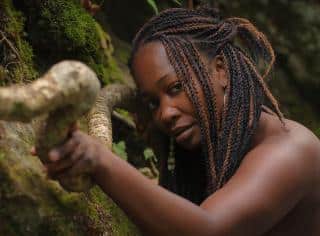
Registration is closed.
$225.00
Share this class
This workshop runs for 4 consecutive weeks starting on May 2nd. Live video participation is on Sundays from 12pm-2pm.
About this Class
“According to Marquez, on one these occasions, he found his grandmother trying to shoo away a butterfly with a duster, saying, ‘Whenever this man comes to the house, that yellow butterfly follows him.’ “Sources of Magic Realism in One Hundred Years of Solitude” by Shaibal Dev Roy
Shaibal Dev Roy goes on to talk about how many aspects of Marquez’s real life was an anchor for One Hundred Years of Solitude. Whether we are within the world of Gabriel Garcia Marquez’s One Hundred Years of Solitude, in the pages Maxine Hong Kingston’s, The Woman Warrior: Memoirs of a Girlhood, in the scene of any Toni Morrison novel, encounter it in the world of Isabel Allende’s The House of Spirits, or in a short story like Nikolai Gogol’s “The Nose,” an argument is made for how real the magic becomes on the page. Wendy Ortiz explores this by bending the genre of memoir in Bruja: A Dreamnoir, by making her dreams the narrative. The realness of magic is also encapsulated within the verses of poems like Christina Rossetti’s “Goblin Market,” and Alberto Rios’s “When There Were Ghosts.” Within some of these examples, the magic borders on fantasy, surreal, otherworldly, and so many things while still situating the audience within what we recognize as the real world. As a result, prose and poetic lines also present an opportunity to make the argument that magic is real when it comes to everything from the particular objects in our lives, deep dives into our cultural or family histories, the spaces we occupy (home or otherwise), to the everyday occurrences in our lives. When talking to the British -Guyanese poet, playwright, and novelist Fred D’Aguiar about his craft and magical realism, he told me, “I think of the super real or the charged real, “magic” in the term magical realism suggests something outside of realism. The spiritual dimension to the real-life involved superstition beside a number of things that enrich the reality of daily life from the Caribbean and the way of speaking was heavily metaphorical. For example, a very, very tall coconut tree with a coconut way up at the top of the tree we would refer to as star fruit because they were out of reach. I knew they weren’t really fruit grown by the stars, but I totally understood what the meaning was because we couldn’t reach the coconuts as kids. They may as well be stars, but they were edible.”
This course is about exploring magical realism through an introduction to the 80+ years of history while also engaging with it on a page. You are not expected to have encountered anything I’ve referenced. We will be exploring questions like: How can we take our dreams and craft them into verse? In what ways can we challenge ourselves to write about our lives – whether it is a short piece or a full memoir project – while using the very real elements of the magical? Through a range of different exercises that will include some visual materials like short clips, written examples, and other kinds of prompts, this generative workshop will give individuals an opportunity to engage with this style within their own writing as poets and prose writers. Individuals will also have an opportunity to bring their own work to this experience and use this as an opportunity to edit through bending what they have written. Specifically, participants will:
• Learn about the elements of writing magical realism while engaging with examples of how poets and writers have thought about this form.
• Observe some of the ways that poets and non-fiction writers can have the magic and real collide on a page within their own work.
• Take this opportunity to generate new material or edit old work using magical realism via visual clips and other kinds of exercises.
Come with an open mind.
“I love extending an invitation into my world and passions through my photography, poetry, and prose. Across my broad range of skills, I most appreciate surfacing the unseen. What is someone’s story under the surface of their face and presentation? What is forgotten to human memory that should be reclaimed? Or, most simply, how can I share the sense or soul of a place with someone who may not ever travel there? I have an endless hunger to ask questions, create conversation through visual or written commentary, and journey into the unknown through my various creative endeavors or collaborations. Even if what I unearth through some of these adventures scare me.”
Virtual classes are usually based on video conferencing. At the moment we use Zoom. Instructors may utilize email as well as the specific ‘class page’ to share materials.
Class pages are accessible to students through their account page. CLICK HERE to visit your account.
Each class is different, and Ruth Stone House allows a wide degree of freedom to instructors as to how they run their classes. If you miss a class or have technical problems you can request a video link to the class you missed.
Technical requirements:
In order to attend a Zoom based class, make sure you meet these technical requirements: Click here
We also require that you have access to email service to use Ruth Stone House Classroom.
Have more questions? CONTACT US.
FInancial aid is applied for on a class by class basis. Not all classes offer financial aid. There is a limited amount of funding available, and aid is awarded in the order received.
This financial aid form is for:
